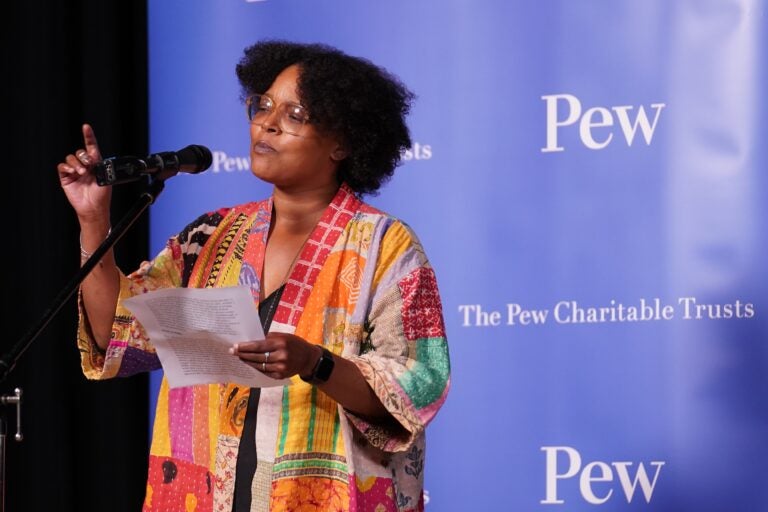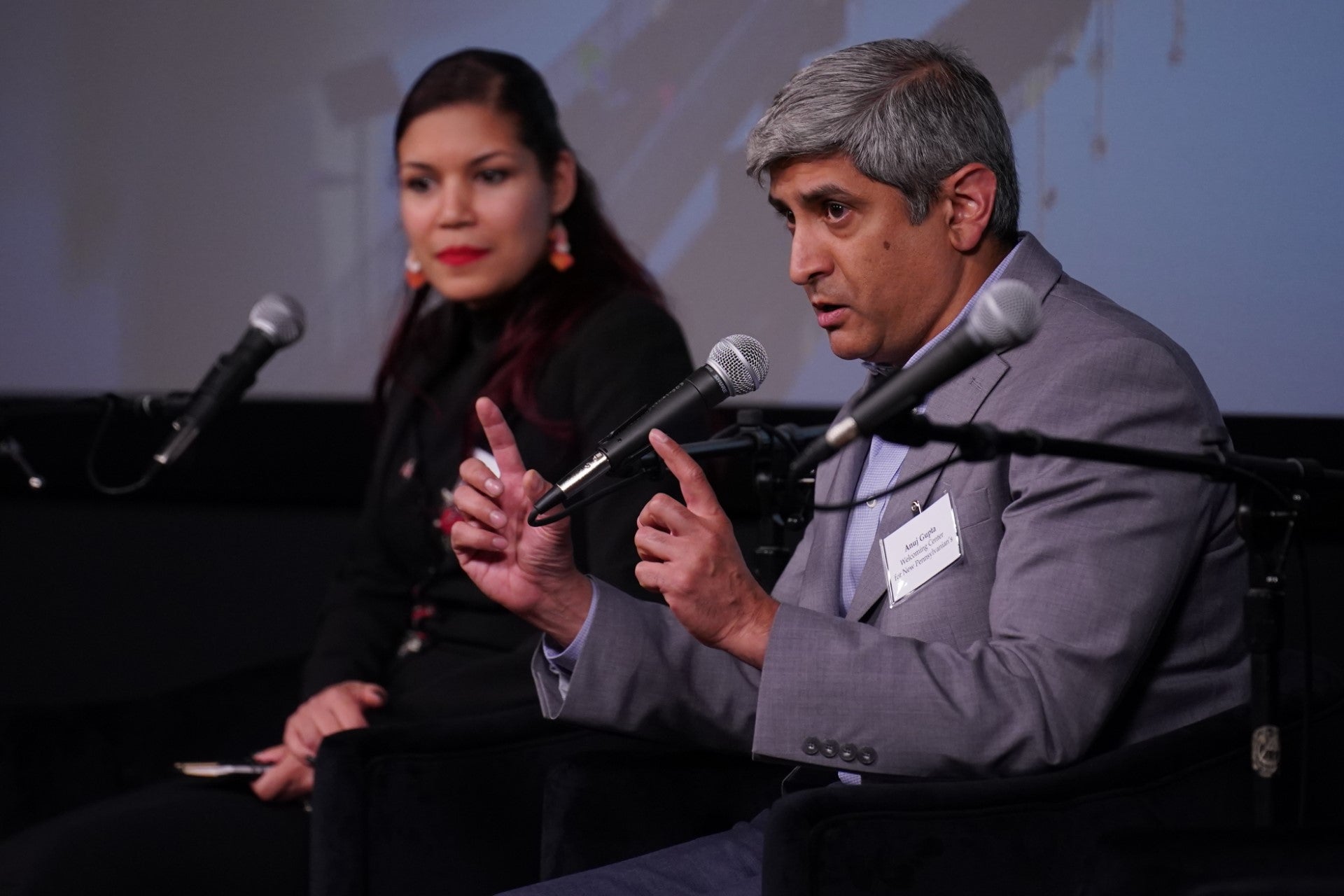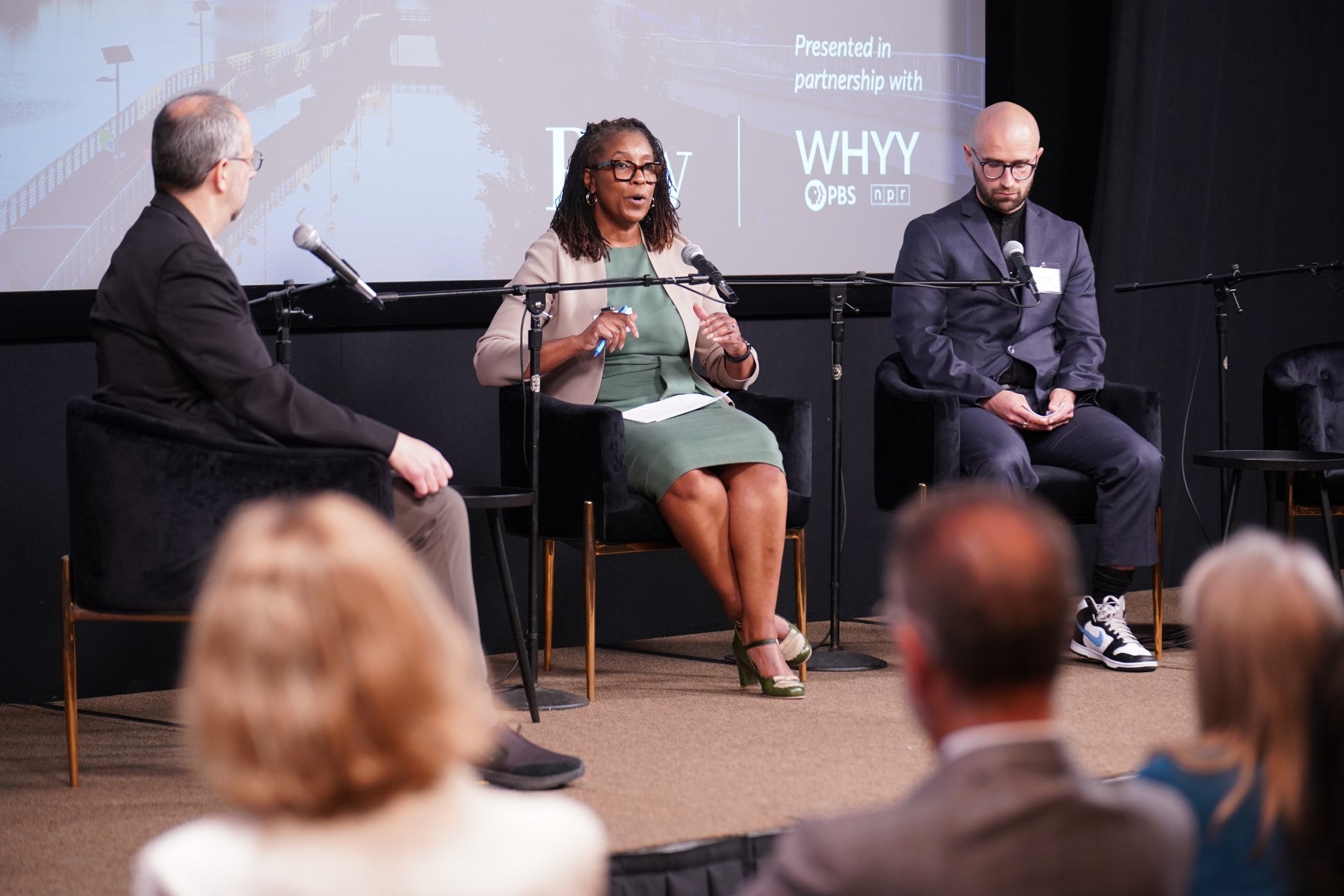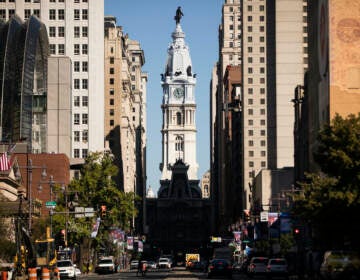Pew’s 2024 ‘State of the City’ event underscores big wins, big issues and trends to look for
Almost 200 people packed the auditorium at WHYY on Wednesday for the official launch of Pew’s latest State of the City report.

Poet Yolanda Wisher at Pew's State of the City 2024 event. (Joseph Kaczmarek)
Almost 200 people packed into the Dorrance H. Hamilton Public Media Commons at WHYY on Wednesday for the official launch of the latest State of the City report by The Pew Charitable Trusts. The event, co-hosted by WHYY, highlighted the city’s improving economic metrics that position Philadelphia as a “city in transition,” while shedding light on persistent problems that hinder growth.
Pew CEO Susan Urahn said the good news is the city has a better educated, more diverse population, with the greatest number of jobs and the lowest unemployment rate.
Unemployment rates hovered at 4.2 % on average — the lowest in three decades — while the number of jobs averaged 765,400 — the highest in 40 years, according to the report.
The evening included speeches from Urahn, WHYY CEO Bill Marrazzo and Sarah Glover, vice president of news and civic dialogue at WHYY, along with three panels moderated by WHYY journalists focusing on immigration, housing and employment. The evening also showcased spoken word artists, supported by Pew, whose performances interspersed the discussions.
A majority-minority city
The first panel to kick off the evening discussed immigration trends. The city’s immigrant population is at its highest since 1940. That was not always the case. In the early 20th century, immigration “stalled,” a Brookings study found.
“If you believe that growing a tax base is important, if you believe that providing skilled talent for our employers to hire is important, if you believe that business start-ups are a good thing to aspire to, I’ve got news. It’s primarily going to be driven by immigrants,” said Anuj Gupta, CEO of the Welcoming Center.

Immigration is one of the main economic and population drivers, and the panelists underscored the contributions of new residents and the challenges they face.
Kerzy Azocar, CEO of Greenline Access Capital, pointed to a gap in cultural competency and support for non-English speakers, barriers she said can be addressed by working together.
A persistent struggle for affordable housing
Panelist Maria Gonzalez, president at the Hispanic Association of Contractors and Enterprises, Jim Burnett with the Black Squirrel Collective and Brian Hudson of the Pennsylvania Housing Finance Agency in a separate panel unpacked the city’s housing market, talking about racial inequities and affordability.
In a city that is majority-minority, Burnett said that almost 95% of developers are white men. He wants to improve access to development opportunities, which includes financing and contracts.
“The laws weren’t set up, in particular, for Black folks not to own property, let alone develop property,” he said. “Over the years, some of that has shifted, but behaviors haven’t shifted that much, appraisals haven’t shifted that much.”
There is a lack of quality homes for sale under $150,000. Gonzalez said that is not helping people in her community.
She touched upon gentrification and referred to the historic displacement of the Puerto Rican community from the art museum area. Gonzalez said the Department of Housing and Urban Development must do better at defining affordable housing and take into consideration that 30% of Philadelphians live in poverty.
“Many neighborhoods in Philadelphia feel the pressures, where there’s gentrification forces that are coming around the periphery of our neighborhoods,” she said. “There is the space to do both affordable and market-rate housing. It should not preclude anyone from doing both. There has to be an equitable solution and strategy to make sure that we’re not pitting one group against the other.”
Redefining ‘quality jobs’
In the final panel discussion, Theresa Singleton, senior vice president at the Federal Reserve Bank of Philadelphia, zeroed in on the wide gaps in income and the lack of workforce training. She said it causes a domino effect for upward economic mobility.
“Only one in 10 men are being trained for low-wage jobs. But when you look at women, Black women and Hispanic women specifically, they’re being trained for lower-wage jobs in health care and personal care,” Singleton said. “We’ve got to disrupt that if we want to change the future income and the prosperity of those households.”

Carlos Aponte, founder and executive director of We Love Philly, agreed.
Aponte also said there needs to be an emphasis on creating jobs that support work-life balance and nurture the social and emotional health of young employees.
“Quality jobs are just not linked to income,” he said. “We need to start going towards quality jobs, meaning your social and emotional health is prioritized by the employer, and we really need to get away from the message that this quality job is only about you making enough money to just have enough, to have disposable income to go spend it,” he said.
In Philadelphia, more people have four-year degrees, are landing jobs and are earning more than they have in the last 10 years, according to the report.
Here’s a roundup of WHYY News coverage on Pew’s latest report:
- A year of transition: Philly sees drop in poverty, violent crime, but deep-seated issues remain, Pew report says | Kenny Cooper
- Pew State of the City: Immigrants make up the largest percentage of Philly’s population since the 1940s, report finds | Emily Neil
- Pew State of the City: Philadelphia’s workforce is more educated than ever, but poverty divide lingers | Kristen Mosbrucker-Garza
- Philly remains a city of homeowners amid sharp drop in residential property sales | Aaron Moselle

Get daily updates from WHYY News!
WHYY is your source for fact-based, in-depth journalism and information. As a nonprofit organization, we rely on financial support from readers like you. Please give today.





